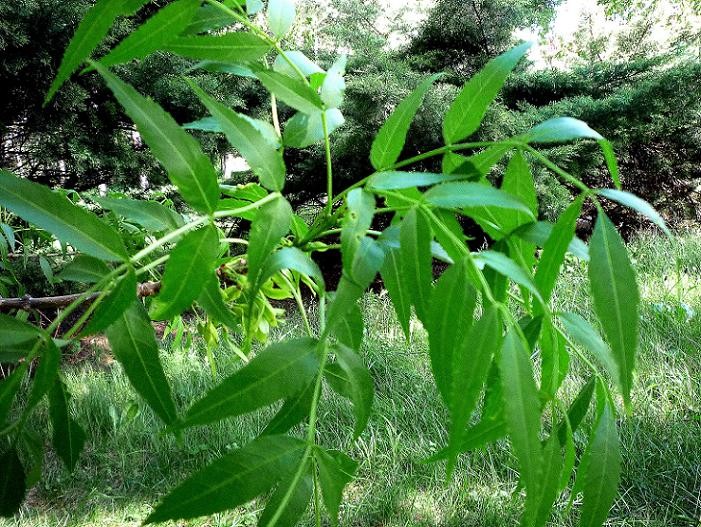Mexican Ash
(Fraxinus berlandieriana)

Description
Fraxinus berlandieriana, the Mexican ash, is a tree native to eastern and northeastern Mexico and to the south-central United States. It has been reported from Tamaulipas, Veracruz, Texas, New Mexico, Oklahoma, Louisiana and Mississippi. Like other species in the section Melioides, Fraxinus berlandieriana is dioecious, with male and female flowers produced on separate individuals. Fraxinus commonly called ash, is a genus of flowering plants in the olive and lilac family, Oleaceae. It contains 45–65 species of usually medium to large trees, mostly deciduous, though a number of subtropical species are evergreen. The genus is widespread across much of Europe, Asia, and North America. The leaves are opposite (rarely in whorls of three), and mostly pinnately compound, though simple in a few species. The seeds, popularly known as "keys" or "helicopter seeds", are a type of fruit known as a samara. Some Fraxinus species are dioecious, having male and female flowers on separate plants but sex in ash is expressed as a continuum between male and female individuals, dominated by unisexual trees. With age, ash may change their sexual function from predominantly male and hermaphrodite towards femaleness; if grown as an ornamental and both sexes are present, ashes can cause a considerable litter problem with their seeds. Rowans or mountain ashes have leaves and buds superficially similar to those of true ashes, but belong to the unrelated genus Sorbus in the rose family. The tree's common English name, "ash", traces back to the Old English æsc, which relates to the proto-Indo-European for the tree, while the generic name originated in Latin from a proto-Indo-European word for birch. Both words are also used to mean "spear" in their respective languages, as the wood is good for shafts. North American native ash tree species are a critical food source for North American frogs, as their fallen leaves are particularly suitable for tadpoles to feed upon in ponds (both temporary and permanent), large puddles, and other water bodies. Lack of tannins in the American ash makes their leaves a good food source for the frogs, but also reduces its resistance to the ash borer. Species with higher leaf tannin levels (including maples and non-native ash species) are taking the place of native ash, thanks to their greater resistance to the ash borer. They produce much less suitable food for the tadpoles, resulting in poor survival rates and small frog sizes.
Taxonomic tree:







